POLL: Adding to a Historic Home — Make it Modern or Recreate the Past?
Vote for your pick then tell us why in the comments below (photos encouraged)!
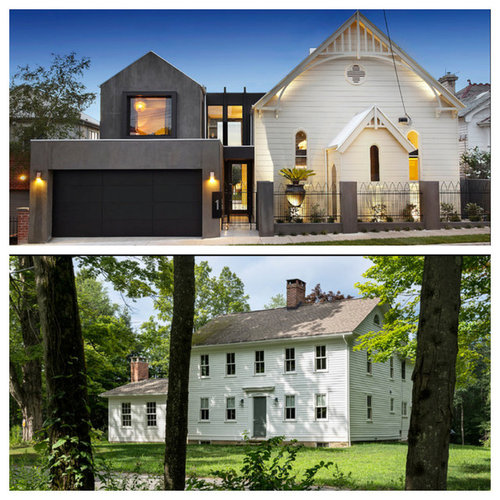
Comentarios (115)
wallybearmom
hace 10 añosStuart Cohen & Julie Hacker, too bad you aren't located in Toronto - I need you!bethiniowa
hace 10 añosSusan Clickner, I understand your frustration at not being able to build the fence you like, especially when you are obviously trying to be sensitive to the look of your neighborhood. But let me tell you: no one is going to mistake a real wood white picket fence for the slick vinyl version. The irregularities of the wood are obvious to anyone who is observant.
--posted from own my white-picketed house....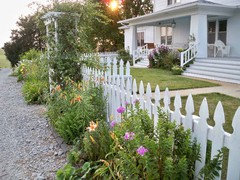
User
hace 10 añosIn our community we have Historic Overlays which are overseen by committees made up of a variety of individuals dedicated to preserving as much of the original character of our area that remains. Improvements whether they are for cosmetic or repair reasons must stay in the style of the time during which they were constructed. Interiors are not not regulated. The exterior rear parts of the structure are less regulated and can be improved to allow pools, hot tubs and decks, etc. When you purchase a property that falls within the Historic Overlay, you do so with the knowledge that someone will most likely be looking over your shoulder while you go about your renovations. We've had a few newspaper worthy "disagreements" over the years, but for the most part, it's been well worth the trouble. I drive through one every weekday as I take my grandkids to school and while it is a short stretch of ground is a lovely stretch of ground! http://www.texasescapes.com/EastTexasTowns/NacogdochesTexas/NacogdochesCountyCourthouseRazedTXDoT1939.jpg What we had: http://www.texasescapes.com/EastTexasTowns/NacogdochesTexas/NacogdochesCounty1958Courthouse1207TJnsn1.jpgAnne Sikorski-Schneider
hace 10 añosA marriage of both modern and old can be the most comfortable. Modern allows for the most comfort and cost effective remodel. Acknowledging the past and enhancing it is the most sophisticated decision.lepstein
hace 10 añosMy addition has adhered to the original style in materials and style to the point that a former resident didn't realize I had on at first, even tho the new had not yet been painted to match the old. Inside, of course it is updated with modern amenities, proper wiring, etc. I have stuck with wide baseboards and trims because that is what I liked about the house in the first place. Furniture is an eclectic mix because it is from all over the house (i ran out of money). I prefer the craftsmanship of old homes and feel I have taken up the challenge to have mine done properly. I am hoping that I can win a "sympathetic addition" award when I am done.
Our city has few rules and developers (who may not even live in the city) are building "infill" to increase density in older areas. The good news is that this will help reduce car traffic and urban sprawl. The bad news is that, while some are trying to style to fit into the area, others are building edifices that look like medical clinics in the older areas (they might look fine in a more modern area). Our city is in the process of creating an Infill Guideline Policy to catch up with our rapid growth. Our heritage society is active in suggesting how this can be done in a sensible manner in order to keep neighbourhoods cohesive and purchasers happy.
Policyacroteria
hace 10 añosÚltima modificación: hace 10 añosMitchell, Very nice article.
I'm curious to know why it's important, particularly among govt's, that the casual observer should be able to tell what is 'historic' vs. a latter addition?
I deliberately use "casual observer" because others would be able to tell the difference, with relative ease in most cases and little difficulty in the remaining. The only time any sort of architectural forensics might be necessary would be if deliberate care was taken to use equally old materials and techniques consistent with the original structure. And we know that rarely, if ever, happens. Also, the addition would have to have historical precedence to be confused as being contemporaneous with the original.acroteria
hace 10 añosSusan Clickner, if the Board requires a white picket fence but you don't want it to be mistaken for a vinyl/PVC you may differentiate it with patterned cut-outs, white painted wood appliques, or, if the Board allows, discrete stenciling....things one doesn't find in vinyl fencing.DEKORA
hace 10 añosWow what a debate,ultimately it depends on the owner and individuals living and residing in the home.I think the contradiction and contrast is what makes for interesting architecture.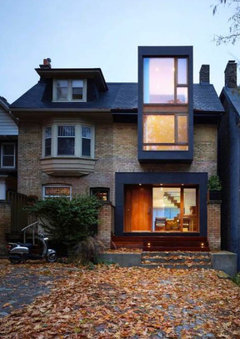
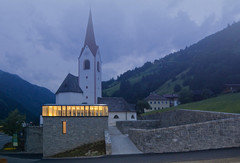
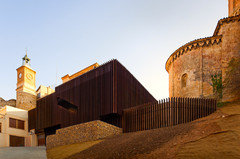
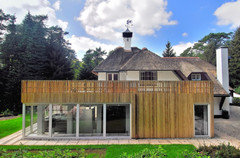
KD
hace 10 añosI voted other because I think it depends on how well you can match the older home, too. A tasteful modern addition that doesn't try to hide the fact that it is modern can look much better than one that tries but fails to look original. Sometimes you really just can't copy the aged look, or don't want to due to insulation concerns, code changes, etc.
There are some lovely older public buildings in the uk like museums where you can see this sort of thing - the original building might be hundreds of years old. You are just not going to add on to that in a way that looks like it is also that old - that's a huge amount of life that the original building has seen, you know? So don't try to pretend. Go modern in a way that still takes a backseat to the original when you look at the whole building, and it is usually stunning.
On a smaller scale, we are debating this now with our 1930s house which needs a complete kitchen renovation. The kitchen is not original to the house, it is in a later addition, and we are trying to decide if we want to go back to a more 1930s aesthetic or just go totally modern there. The last thing I want is to waffle between the two so it looks like we kind of tried to do 1930s ish and failed miserably. Yuck.FINNE Architects
hace 10 añosAlthough it is a difficult task and requires a great deal of design study, I firmly believe that it is possible to engage older homes in a conversation by juxtaposing more modern elements to the older home. Re-creating the past is not a useful design goal. Here is an example of a modern renovation of a 1905 Bungalow into a light-filled Reading Room: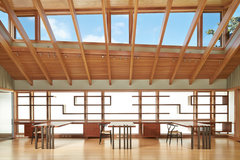 CS Reading Room · Más información
CS Reading Room · Más informaciónTim Andersen Architect
hace 10 añosNils Finne, destroying the past is not a useful design goal either. Modernists love "to engage older homes in a conversation" as long as they can do all the talking. From this photo I don't see a trace of the 1905 bungalow you so carefully studied.FINNE Architects
hace 10 años@bungalowmo, you are right, the CS Reading Room is a reading room for a small church in a 1905 1500SF bungalow. Here is a modern residential renovation of a 1925 house in Seattle called the Dorffel renovation: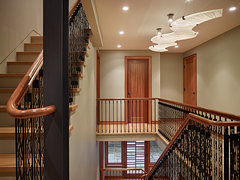 Dorffel Renovation · Más información
Dorffel Renovation · Más informaciónFINNE Architects
hace 10 años@Tim Anderson, I do not advocate destroying the past, but creating a conversation across time between old and new. This is not easy! Our CS Reading Room project has received much acclaim from the community, the client, and many publications. Here are some more images, if you want to check it out:
http://www.houzz.com/projects/46476/CS-Reading-RoomO'Shea Builders LLC.
hace 10 añosBy all means, update the interior with modern conveniences. You live "in" your house, not out in the road looking at it. Take into consideration the "feel" of the neighborhood when looking at a facelift.Baltimore Architectural Detail LLC
hace 10 añosAcclaim from the community does not mean honoring a past design aesthetic or honoring a structures history either. I'm not an architect but have done tons of work on historic structures. This structure uses wonderful natural materials but hardly has elements of the bungalow style. That's not a bad thing, it's just a how it is. It also does not invalidate the structures elegant linear modernist features which happen to appeal to me.
All would do well to understand the difference between renovation and restoration. Both have pluses, both have minuses, both have correct and incorrect applications and both terms are used wildly incorrectly often causing the conversation between past and present to become skewed and confused.morfg
hace 10 añosI think both of the two examples represent sound architectural decisions. The small wooden church is allowed to shine next to its slightly smaller neighbor in contrasting colors. The result is very interesting. An old-style addition would blur out the original design of the church. The small addition to the large traditional wooden house also respects the original structure. It does not add interest, and frankly, the house would have looked better without it. However, if the owners really needed the extra space, this addition is discreet enough not to destroy the whole. In this case a modern concrete or glass structure would probably look misplaced.nonnyparry
hace 10 añosI voted other. The oldest part of our house dates from the 1440's and the newest is Victorian, with Tudor and Georgian in between. When the house was added to it was always done in the 'current' style and it tells a wonderful story. As long as houses are extended well with thought given to how they will work as a living space, and with maybe a nod to local building materials they should stand the test of time.lepstein
hace 10 añosI do like the first pic from DEKORA. The others (and FINNE) seem examples of what not to do. I agree with nonnyparry that different styles can blend and be interesting if done carefully and respectfully - both of the original and the neighbourhood. I have chosen to stay true to my Victorian house on the outside, but have put modern amenities inside. I just wish I could afford some other upgrades inside and some fun English garden type landscaping outside now that the addition is virtually done...Well, I guess I'll catch up sometime :-Pkookabura1
hace 10 añosÚltima modificación: hace 10 añosThere is a huge difference between US and Europe. Europe has so many older buildings. 1880 in Britain is nothing special but it's a really big deal in the US. Across Europe you see stunning contemporary additions to ancient buildings. The massive and ponderous Louvre in Paris was energized by the stunning glass pyramid addition. It's about perspective. My parents lived in a planned town in England. It was laid out in 1227 AD. The lot boundaries date from that time. The house was re-faced with dressed stone in 1760. No big deal. My 1907 "Victorian" in Atlanta WAS a big deal in my neighborhood.FINNE Architects
hace 10 añosI agree with Kookabura1. My own family comes from Oslo, Norway, and I have been very influenced by the ideas of my friend, the renowned Norwegian architect Sverre Fehn, who won the Pritzker Prize, the Nobel Prize of Architecture. Here are my thoughts:
One of the reasons people love older homes is the realization that you can feel the presence of the craftsmen from 75 or 100 years ago. We can feel and see the care and effort in the creation of these homes. So, we devote resources to giving them new life as renovated structures. I often work on renovations in which we establish a conversation between past and present, and we introduce what I call "crafted modernism" as a link between old and new. As Sverre Fehn said, “Bare ved å manifestere nuet kan en få fortiden i tale.” (Only by making our time manifest, can we begin a conversation with the past.)Baltimore Architectural Detail LLC
hace 10 añosI agree with the comments from Europeans here. Americans have no idea about what age is. We think an old house is 1950, literally I have people tell me that. While as a student of architectural style, I would consider old to be 1750 in the US, still not old by European standards. My aunt has a house on Majorca, that structure in a little village on the north side of the island, probably originally dates to the 1500's.Shuler Architecture
hace 10 añosÚltima modificación: hace 10 añosAs a traditionalist in most of my design work, I usually attempt to honor the structure that I am working on. That said, I am the first to also try to respond with a more modern solution to traditional planning problems. I'm also the first to admit that I am not an artiste who tries to push the envelope in new and innovative directions. That has never really been my ultimate interest as an architect and I don't seem to get clients who want to go in that direction. On the rare occasion that I am engaged by such a client, I will usually send them in the direction of my very talented colleague Nils Finne (who has commented here previously).
Ultimately, this whole conversation seems to boil down to one of taste. The practical mid-westerner in me is usually very budget minded so my tastes typically run to solutions that work within my clients' pocketbooks. But there are plenty of buildings in the world that warrant innovative solutions where old & new ideas meet up and blend together seamlessly. Just don't think there is a one size fits-all answer to this debate AND don't think being a slave to any one strategy makes sense either. I do think we can all agree that an ugly building is just plain ugly no matter what style you skin it with.Full Circa, Inc.
hace 10 añosThe Secretary of the Interior has a published set of guidelines regarding the preservation and rehabilitation of historic property. Our company utilizes these to guide our work on historic properties. The guidelines call for compatible additions and a differentiation of new from old. We interpret this to mean something as small as a differentiation in materials or something as big as a modern addition. Both of the above options are equally interesting.Stuart Cohen & Julie Hacker Architects LLC
hace 10 añosThe guide lines ONLY apply to designated LANDMARKS. See my earlier comment.2e Architects
hace 10 años"Both have pluses, both have minuses, both have correct and incorrect applications." Baltimore Architectural Detail LLC This is 100% correct. I would add that BOTH approaches are also difficult. There are many "recreations" that seem to just miss in the details. While the overall design might be successful - there is a discernible something that simply does not work. Obviously there are recreations that are magnificent. Modern additions need to be designed with ultimate care. In the vast majority of examples the addition needs to be subservient to the original building. This combination requires a skilled designer with very little ego. All of us have seen bad examples of modern additions and truly inspired examples as well. My guess is that the former outnumber the later.
In the end, I try to let my client make the decision. With some guidance. Most clients have a preconceived notion that - often enough - is based on very incomplete information. I ask questions about the goals, then educate a little, and then ask follow up questions. I want my clients to seriously consider BOTH options and arrive at the path that is right for them.Elegant Home Design
hace 10 añosWe concur. It is 'of them, for them & by them'. But true consultants lay out all the options & scenarios...then let the client make his decision based upon that.bungalowmo
hace 10 años@FINNE...
"One of the reasons people love older homes is the realization that you can feel the presence of the craftsmen from 75 or 100 years ago. We can feel and see the care and effort in the creation of these homes. So, we devote resources to giving them new life as renovated structures."
I agreed with this up until the mention of giving them new life as renovated structures.
NOT every old structure needs to be "renovated". I think that might be where our personal preferences differ. I'm not saying that a home built in the 1700's should never have indoor plumbing or an inside kitchen, but gutting & using materials beyond any recognition of 1700 is not my idea of a sympathetic result.
That reading room looks lovely...like a 1950's lovely. It does not look anything like the 1920's bungalow you started with.Mark Bischak, Architect
hace 10 añosThe addition should be sympathetic to the existing architecture.
I know that is a broad statement, but if applied properly it will avoid shipwrecks.Circa Old Houses
hace 9 añosIt makes us so happy to see most of the users on this forum posting "in the past"! We love our historic homes and if you are searching for your own check out our curated historic marketplace - http://www.circaoldhouses.comFurreverYours
hace 9 añosKeep the integrity of the original design but upgrade with modern conveniences. #BeSeenBeSafeBob Gregory
hace 9 añosI am adding a major addition to our 1839 Hstone house. I felt it was important to honour the past so the whole exterior is being done with full sized stone acquired from a demolished church. Behind the stone there is 3 inches of rigid foam insulation in addition to six inches of fibreglass insulation within the six inch wood studs. The interior has modern construction but it is hidden and what shows are reclaimed barn beams for the verticals and ceiling beams. In the photo I am just about to complete the Gothic window which includes a stained glass church window to respect the fact that the stone comes from a church.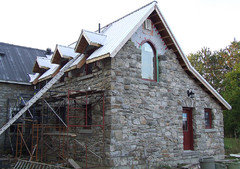
User
hace 9 añosI think you honor the roots but that doesn't mean matching every detail to the nth degree. And much depends on the original structure. The first picture makes me think that the "little white church in the dale" met the "cement monster from (rhymes with dale, sorta)". I can't see how that honors anything.
The second pic obviously maintained pretty much every detail other than the two stories but curiously, it evokes no emotion or personality.
So I guess the real question is, does the addition enhance or detract from the original?DaVill Blinds
hace 9 añosI think it looks ridicules to mix them. Integrity of the property is completely lost.jsilvester
hace 9 añosHaving nearly completed the renovation of a 1925 Spanish Revival home (in Los Gatos!), we have relished the adventure of discovering the history, down to the original exterior color of the house. The house was modified slightly circa 1935 by one addition and some minor exterior changes that altered the original character of the exterior to something more "Mediterranean" in concept (the flat roof, while still in tact, was covered with a pitched roof. Interestingly, the interior was not a typical Spanish Revival style. Any further changes ceased in 1955. All lighting was original, and so was the plumbing.
With the help of an incredible contractor (Chateau Construction), we kept the pitched roof, but brought the style back more in line with its origins, through the selection of materials and color. The contractor understood our desire to respect the house and he helped with major decisions. Inside, the lighting was restored, the main areas with extensive trim and crown molding and fireplace were saved. The kitchen was gutted, but the style recreated with a better layout. One person in the neighborhood thought the cabinet and the kitchen was original because of the period details.
Before, During, & After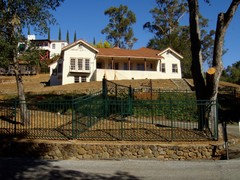
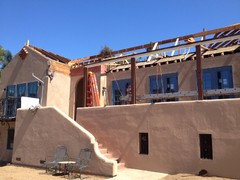
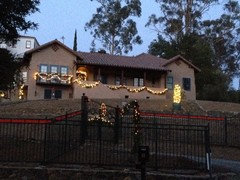
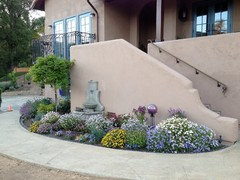
Bob Gregory
hace 9 añosVery nice, you have respected and enhanced a beautiful home both inside and out. Too often, in my view, a beautiful old house is respected on the outside and made a completely different style on the inside in the guise of "modernizing it". Well done !
Nancy S
hace 9 años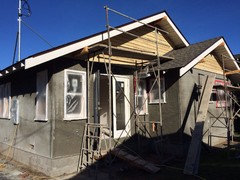
I voted other. We are currently building an addition to our 1915 bungalow. It is actually taking the place of an ugly addition from the 70s. We have chosen to make it sensitively different on both the interior and exterior. On difficult decision was to use stucco. We settled on this rather than wood siding because of the desire to differentiate and to at the same time blend in. It is blending in because the porch and garage already have stucco. All the windows in the addition were to be wood clad, but as I've been working on my wood windows in the rest of the house I chose to switch to all wood windows...they are awesome. We're not done yet but you can already see that the exterior is a big improvement over what was added previously.
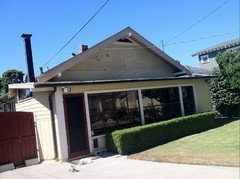
Rosemary Freitas
hace 9 añosI hang with the 30% Go for it. In europe they blend old with new by going ultra modern. It takes genius I must admit, but why should Americans be so old fashioned?
Steven
hace 9 añosCanadian requirements about additions to preserved buildings require that the new be distinct from the old, which almost facilitates modern additions to traditional older structures. I consider a period architecture to be a museum of sorts to the style it was initially designed in, so I would have no problem sticking a modern design on an older design, which becomes in itself a showcase of the different style. I would preserve the elements from the interior of each as well. Furniture is mobile and can be removed, but a stone fireplace should only be restored and not gutted and replaced, and so on...
It also creates a markedly obvious transition which may be jarring if not done correctly, one portion should not overwhelm the other but should instead complement it.
lepstein
hace 9 años@Steven: Not sure where you got your information. Perhaps, in your area in Canada, requirements are that the new be distinct from the old. In our city in Saskatchewan, the Municipal Heritage Advisory Committee gives awards for heritage friendly and "sympathetic" additions, and the city is becoming more and more open to the idea. In fact, regulations now limit infill size in older areas.
In my opinion, the exterior should be as close to the original as possible, or at least blend in. Inside, the home owner can choose whether to remain with the style or not.
Bob Gregory
hace 9 añosIt is the current fad in Heritage circles to clearly differentiate the new from the old. As a previous commentator correctly observed, this usually results in a modern addition attached to a heritage structure, destroying the whole look of the original. It has also become a real problem for developers who purchase a heritage structure and want to add something which will complement and be close to the original and fit in well in the neighbourhood but are now being told by City planning departments that they must clearly differentiate and the end result is the developer looks bad and the neighbourhood is up in arms at the ruin of a beautiful piece of heritage in their neighbourhood. Another strong reason for opposing any efforts to designate a structure as a heritage structure. When my 1838 home's addition is complete you will not be able to tell the difference between the new and the old and the new will totally respect the old right down to the square headed nails, trim, etc.
GenuineAntiqueLighting.net
hace 9 añosÚltima modificación: hace 9 añosPlease read our Blog about this Topic - Adding to a Historic Home — Make it Modern or Recreate the Past?
Integration of Antique Lighting into an Already Collected Designed Environment
and
Jason Chambers, Architect
hace 7 añosThere is a reality to historical structures that harkens back to a past lifestyle. Trying to recreate the structure around that lifestyle for people who have to live in this world is ridiculous. But the craft that was used to build some of these older (I am in New England, we do old here) needs to be respected. Willy nilly modernism tacked onto a regal older structure that was built with scale and proportion is not the solution. However, using modern design with proper respect given to the existing scale, proportion and massing can be beautiful.
User
hace 3 añosI have very strong feelings that additions to old houses need to speak to the vernacular of the house in a significant way. I can't STAND when I see some glass box tacked on to a lovely Georgian or Victorian. Its like seeing someone wearing a parka with shorts and flip flops. Just NO.

Volver a cargar la página para no volver a ver este anuncio en concreto


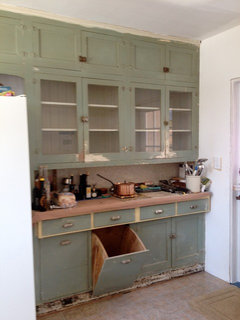
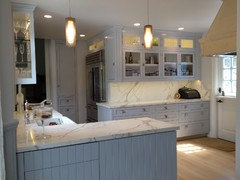
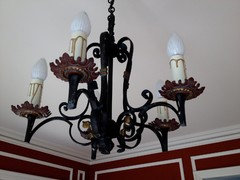
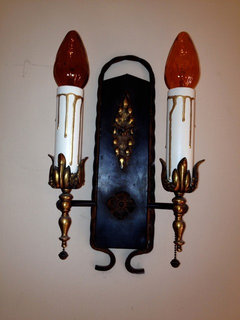
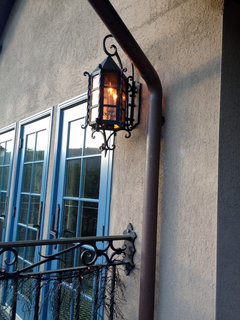
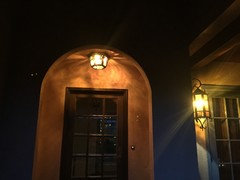


pepper49